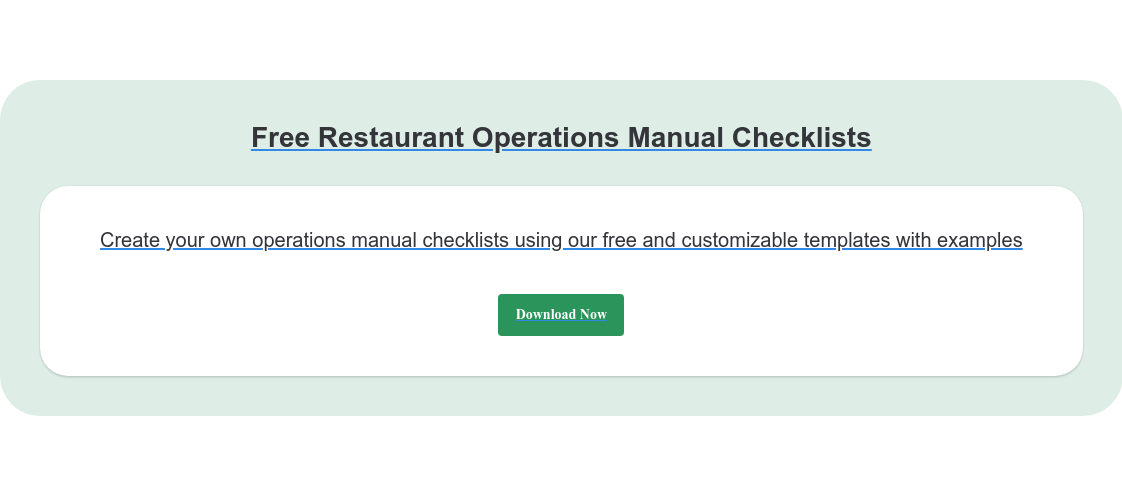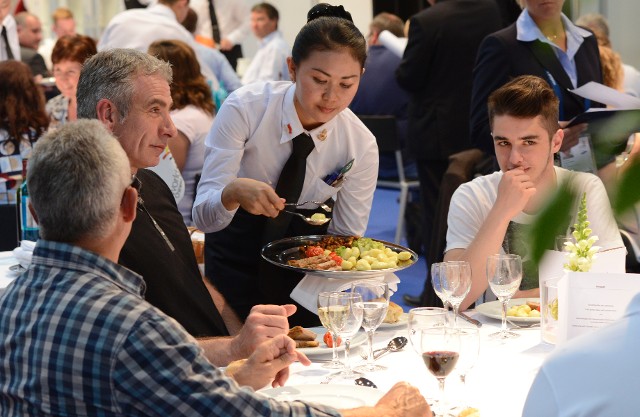Running a restaurant is no longer just about the food being served. People come into restaurants expecting a certain level of service from the staff members. In order to be successful, it’s important for restaurants to make sure that they are meeting the guests’ expectations.
Popularity, good food, and ambiance might be what makes people walk into your restaurant for the first time, but it’s the quality of service that keeps them coming back. Without it, your restaurant is missing out on the key to success.
It’s no news that customers like to be treated well, and are more likely to warm up to your business if you make that extra bit of effort towards making their dining experience special. Small gestures like remembering their name, quick check-ups during their meal, or even just a polite conversation go a long way in building a loyal customer base.
While restaurants have started realizing the importance of good customer service, the one thing that is still hard to find is consistency. It’s relatively easy to provide high-quality service on one day, however, the key is to make sure that you maintain your restaurant’s standards every single day. Lack of consistency makes it harder to retain your customers who walk into your restaurant expecting the same level of service they received on day one and walk out disappointed because it no longer matches their expectations.
Given that a 5% increase in return customers can increase profits by up to 95%, losing them due to a lack of consistency in service can significantly impact your restaurant’s success.
How then, do you make sure that you don't just impress guests the first time, but every single time, the same way?
That’s where restaurant standards come into play.

What are restaurant standards and how to maintain them?
Restaurant service standards are an integral part of success - they define the level of service provided at your restaurant and act as benchmarks for measuring its quality over time to help keep track and ensure that the service is always top-notch.
Here are some ways to maintain your restaurant’s service standards:
1. Keep an operations manual to guide your staff
An operations manual is one of the most useful tools to help maintain restaurant standards. It’s a manual that contains the processes and procedures for every single aspect of your restaurant and defines how everything should be done. For example, an operations manual will make sure that the front-of-house staff always cleans tables and chairs in the same way, regardless of who is performing the task. Or that the personalized service your customers love and come back for will always be the same, even if the person providing the service changes.
As restaurant staff turnover is one of the highest, it’s important to keep an up-to-date operations manual that defines your restaurant standards and helps maintain them throughout your restaurant’s lifetime.
2. Communicate with your staff
Having an operations manual with defined restaurant standards is a great starting point. But it’s of no use if the standards are not communicated with your staff. Make sure your team is well educated about the benchmark standards you aim to maintain at your restaurant and the importance of maintaining them consistently. Unless they’re aware of the value of these standards, they are unlikely to dedicate time and effort towards maintaining them.
3. Provide regular training
Even if your staff is well-aware of restaurant standards, it’s always a good idea to provide them with frequent training on the processes and procedures involved in maintaining the standards to make sure that the level of service remains consistent.
4. Keep track of restaurant reviews
Guest feedback provides restaurant managers insight into the diner’s experience and helps them better understand the current status of their staff’s performance. Keeping track of reviews is a great way to know whether the service standards are being met by your staff or not. Negative reviews can help identify pain points in service and where your staff might need more training to provide good customer service.
5. Listen to your staff
While it’s good to educate your staff about restaurant standards, it’s also important to listen to what they have to say and take into account their knowledge of customers while drawing up your service standards. After all, they are the ones that deal with guests on a regular basis and have the best understanding of customer behavior, preferences, and choices. Taking their feedback can help tailor your restaurant standards particularly to your customers which in turn will improve the effectiveness and level of service.
6. Keep reviewing your restaurant’s service standards
It’s important to remember that restaurant standards are not set in stone. In fact, the best ones are those that keep evolving with time. Keep track of your restaurant’s performance based on guest and staff feedback and other external factors to better understand which service standards are best suited to your restaurant and which ones need more work. There also might be service standards that become necessary to implement due to external factors, make sure to keep track of these factors and make changes accordingly. For instance, after the onset of the recent pandemic, contactless menus have become a necessary feature in every restaurant. It’s important to make sure that your restaurant also jumps on the bandwagon and sets up contactless menus to meet the customers’ evolving expectations.
Examples of Restaurant Service Standards to Get You Started
While every individual restaurant would have its own set of standards based on the type of service, style, audience, and other factors, there are some that need to be maintained across all establishments to provide good service.
Here are a few examples of restaurant service standards to help you get started:
- Provide guests with a seamless booking experience
- Greet guests politely while answering the phone
- Ensure that the table is cleaned and set up before the guests arrive
- Welcome guests with a smile and a greeting
- Ask guests about their table preferences
- Guide guests to their allotted table or waiting area
- Ask guests about dietary restrictions and allergies
- Help guests place their orders by sharing specials and answering questions
- Repeat the order to ensure accuracy
- Make sure that the order is communicated accurately to the kitchen staff
- Make sure that the order is served to the guests without delay
- Check up on the guests at regular intervals to assess how their dining experience is going
- Keep track of the guest’s dining journey to know when to approach them
- Clear out the table after making sure the guests have finished eating
- Present the bill only when asked, and avoid delays
- Ask for guest feedback before they leave the restaurant
- Greet the guests politely upon their exit
- Clean the table and set it up for the next guest














.webp?width=200&name=v2-15mknc-qpw1b%20(1).webp)
.webp?width=200&name=v2-15kqni-p0exl%20(1).webp)
-1.png?width=1812&height=1072&name=TripAdvisor%20%26%20More%20Bookings%20(1)-1.png)
-2.png?width=1812&height=1072&name=Google%20Bookings%20(1)-2.png)


-1.png?width=200&name=TripAdvisor%20%26%20More%20Bookings%20(1)-1.png)
-2.png?width=200&name=Google%20Bookings%20(1)-2.png)
-1.png?width=200&name=Instagram%20Bookings%20(1)-1.png)
-1-png.webp?width=200&name=Facebook%20Integration%20Rectangle%20(1)-1-png.webp)







.webp?width=200&name=download%20(1).webp)
%20(1)-2.webp?width=200&name=Eat%20(34)%20(1)-2.webp)
%20(1)-2.webp?width=200&name=Eat%20(18)%20(1)-2.webp)









.webp?width=314&height=175&name=Chit%20Printer%20Banner%20(8).webp)



.webp?width=144&height=72&name=Eat%20App%20Logo%20(3).webp)